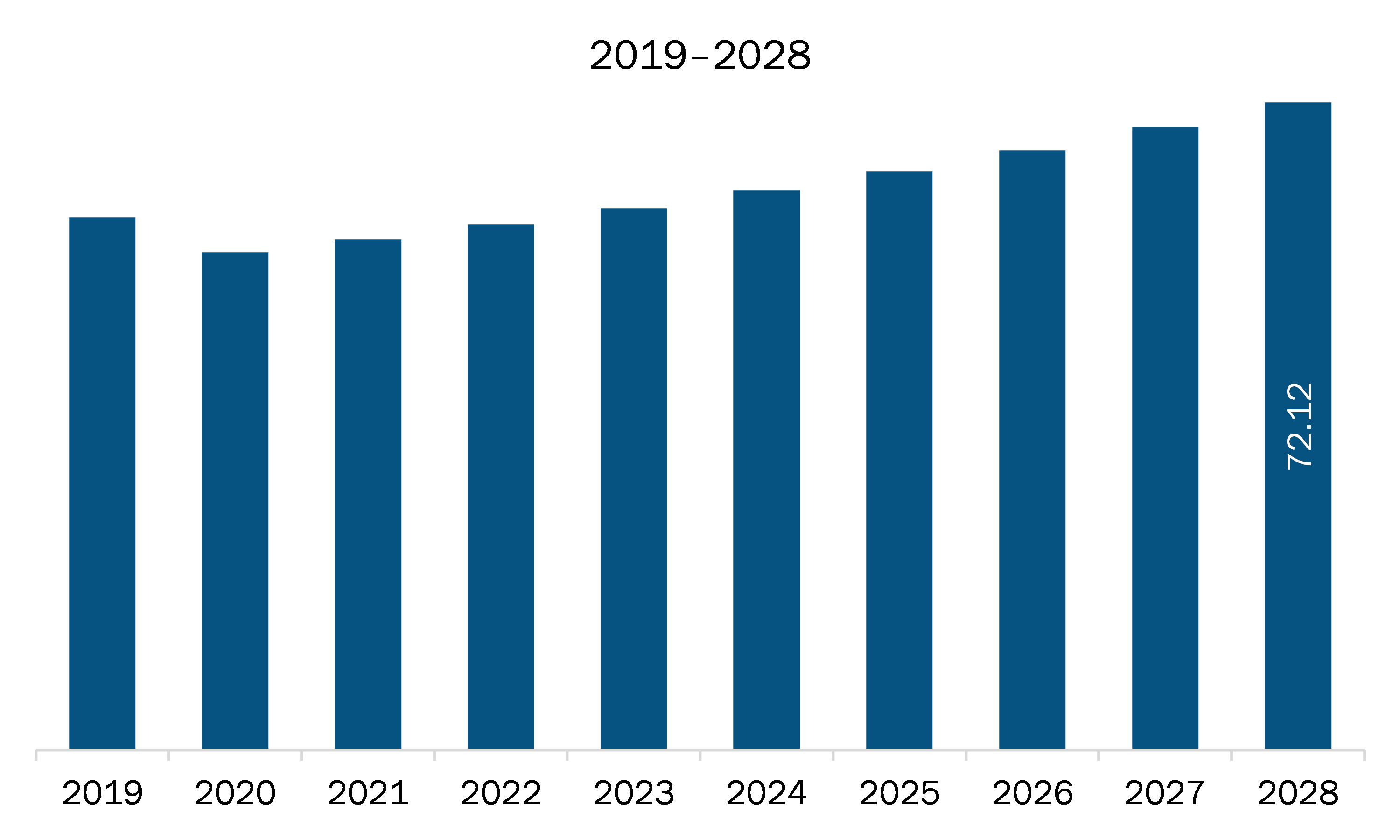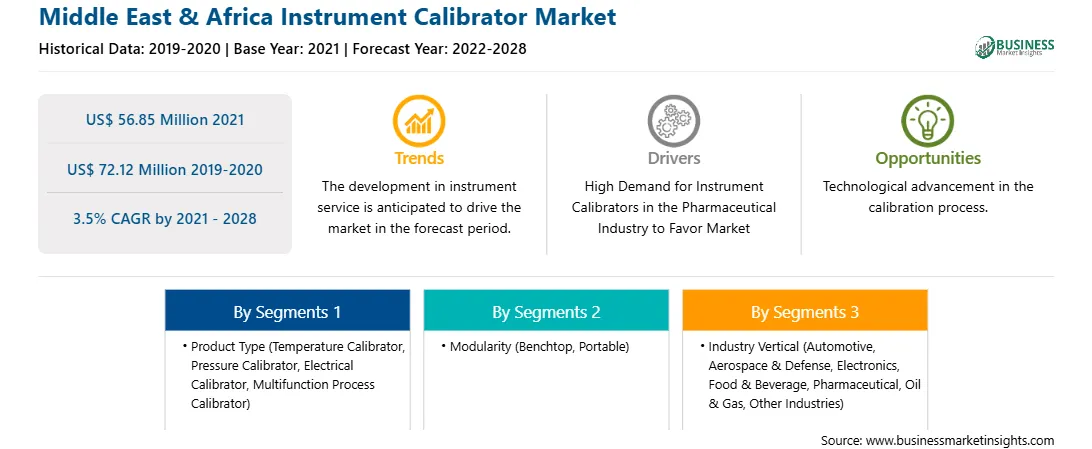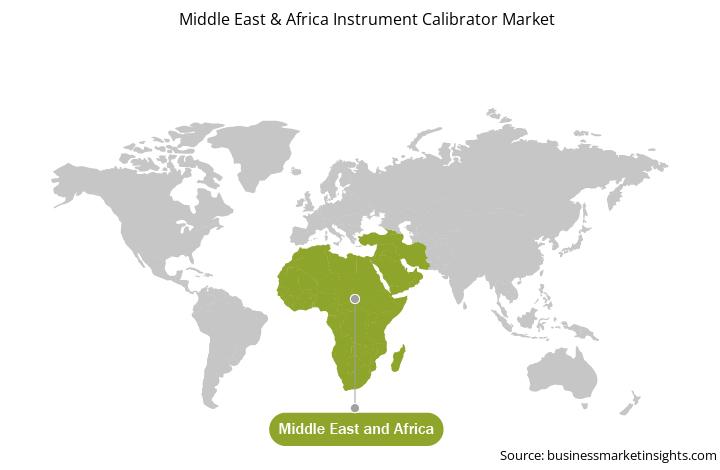The Middle East & Africa region includes Saudi Arabia, the UAE, South Africa, and the Rest of Middle East & Africa (MEA). The growth of MEA instrument calibrator market is majorly attributed to extensive growth in pharmaceutical industry and rising emphasis on quality standards. This is largely due to the region's exponential investment in modern infrastructure and advanced calibration technologies. Rest of MEA include countries such as, Israel, Iran, Iraq, Kuwait, Egypt, and others. Rising focus of development of innovative therapies for the treatment of chronic conditions across the region is boosting the growth of research facilities and development centers in the region. Moreover, the government in the region are actively investing in the research and development in order to become self-reliant in terms of drugs and medicines. Such strategic steps by the government authorities are estimated to foster the number of research laboratories in the region, which will in turn drive the growth of rest of MEA laboratory balances and scales market during the forecast period.
Countries in the MEA have been widely affected by the COVID–19 pandemic. However, the countries have wisely reacted to the COVID–19 pandemic to avoid the spread of infection. Like other regions, lockdown and social distancing were imposed, impairing these trends hindering access to work, regular income, payments, fairs, schools, and healthcare. Therefore, the countries have undergone huge losses and are still trying to recover them. The lockdown has widely affected the non-emergency medical services in the region, affecting the medical devices. Countries such as Saudi Arabia and the UAE are emerging as healthcare destinations in the regions. However, they are dependent on the countries for the resources. The availability of vaccines and other healthcare facilities in the developing countries in the region is expected to provide scope for the market in the coming years. The COVID-19 pandemic has helped the above-mentioned countries enhance their capacity and showcase their abilities for healthcare services.

Strategic insights for the Middle East & Africa Instrument Calibrator provides data-driven analysis of the industry landscape, including current trends, key players, and regional nuances. These insights offer actionable recommendations, enabling readers to differentiate themselves from competitors by identifying untapped segments or developing unique value propositions. Leveraging data analytics, these insights help industry players anticipate the market shifts, whether investors, manufacturers, or other stakeholders. A future-oriented perspective is essential, helping stakeholders anticipate market shifts and position themselves for long-term success in this dynamic region. Ultimately, effective strategic insights empower readers to make informed decisions that drive profitability and achieve their business objectives within the market.

| Report Attribute | Details |
|---|---|
| Market size in 2021 | US$ 56.85 Million |
| Market Size by 2028 | US$ 72.12 Million |
| Global CAGR (2021 - 2028) | 3.5% |
| Historical Data | 2019-2020 |
| Forecast period | 2022-2028 |
| Segments Covered |
By Product Type
|
| Regions and Countries Covered | Middle East and Africa
|
| Market leaders and key company profiles |
The geographic scope of the Middle East & Africa Instrument Calibrator refers to the specific areas in which a business operates and competes. Understanding local distinctions, such as diverse consumer preferences (e.g., demand for specific plug types or battery backup durations), varying economic conditions, and regulatory environments, is crucial for tailoring strategies to specific markets. Businesses can expand their reach by identifying underserved areas or adapting their offerings to meet local demands. A clear market focus allows for more effective resource allocation, targeted marketing campaigns, and better positioning against local competitors, ultimately driving growth in those targeted areas.

The instrument calibrator market in MEA is expected to grow from US$ 56.85 million in 2021 to US$ 72.12 million by 2028; it is estimated to grow at a CAGR of 3.5% from 2021 to 2028. Calibration is the process of comparing unknown values obtained for devices under test (DUT) to a known value reference standard. In pharmaceutical manufacturing, strict safety requirements and regulations must be maintained, and manufacturing processes are consistent and reliable. This ensures product purity and the best possible end-product quality, both of which are important for patient safety. As a result, several pressure and temperature measurements, such as local indicators (gauges), transmitters, and switches, are commonplace in these operations. Many of these tests are performed in harsh circumstances, such as in autoclaves, centrifuge machines, and sonicators. For instance, in the chemical industry, it's used to cure coatings, vulcanize rubber, and perform hydrothermal synthesis, as well as in medical applications to perform sterilization. The timely calibration of instruments, followed by systematic and appropriate paperwork, is a critical for ensuring that the pharmaceutical products are manufactured as per the current good manufacturing practices (cGMPs). In case of any technical issues in instruments, the calibration data can help understand when, when, and how an error occurred. As a result, pharmaceutical regulatory authorities keep a check on the type of data collected and the interval between calibrations.
MEA instrument calibrator market is segmented into product type, modularity, industry vertical and country. Based on product type, the MEA instrument calibrator market is segmented into temperature calibrator, pressure calibrator, electrical calibrator, and multifunction process calibrator. Pressure calibrator segment held the largest market share in 2020. The modularity segment is classified into benchtop, and portable. Portable segment held the largest market share in 2020. Based on industry vertical, the MEA instrument calibrator market is categorized into automotive, aerospace and defense, electronics, food, and beverage, pharmaceutical, oil and gas, and others. Oil and gas segment held the largest market share in 2020. Based on country, the MEA instrument calibrator market is segmented into Saudi Arabia, South Africa, UAE, and rest of MEA. Saudi Arabia held the largest market share in 2020.
A few major primary and secondary sources referred to for preparing this report on the instrument calibrator market in MEA are company websites, annual reports, financial reports, national government documents, and statistical database, among others. Major companies listed in the report are Additel; AMETEK Inc.; Baker Hughes Company; Beamex Oy Ab; Calmet; Fluke Corporation; Spectris; WIKA Alexander Wiegand SE & Co. KG; and Yokogawa Electric Corporation.
The Middle East & Africa Instrument Calibrator Market is valued at US$ 56.85 Million in 2021, it is projected to reach US$ 72.12 Million by 2028.
As per our report Middle East & Africa Instrument Calibrator Market, the market size is valued at US$ 56.85 Million in 2021, projecting it to reach US$ 72.12 Million by 2028. This translates to a CAGR of approximately 3.5% during the forecast period.
The Middle East & Africa Instrument Calibrator Market report typically cover these key segments-
The historic period, base year, and forecast period can vary slightly depending on the specific market research report. However, for the Middle East & Africa Instrument Calibrator Market report:
The Middle East & Africa Instrument Calibrator Market is populated by several key players, each contributing to its growth and innovation. Some of the major players include:
The Middle East & Africa Instrument Calibrator Market report is valuable for diverse stakeholders, including:
Essentially, anyone involved in or considering involvement in the Middle East & Africa Instrument Calibrator Market value chain can benefit from the information contained in a comprehensive market report.